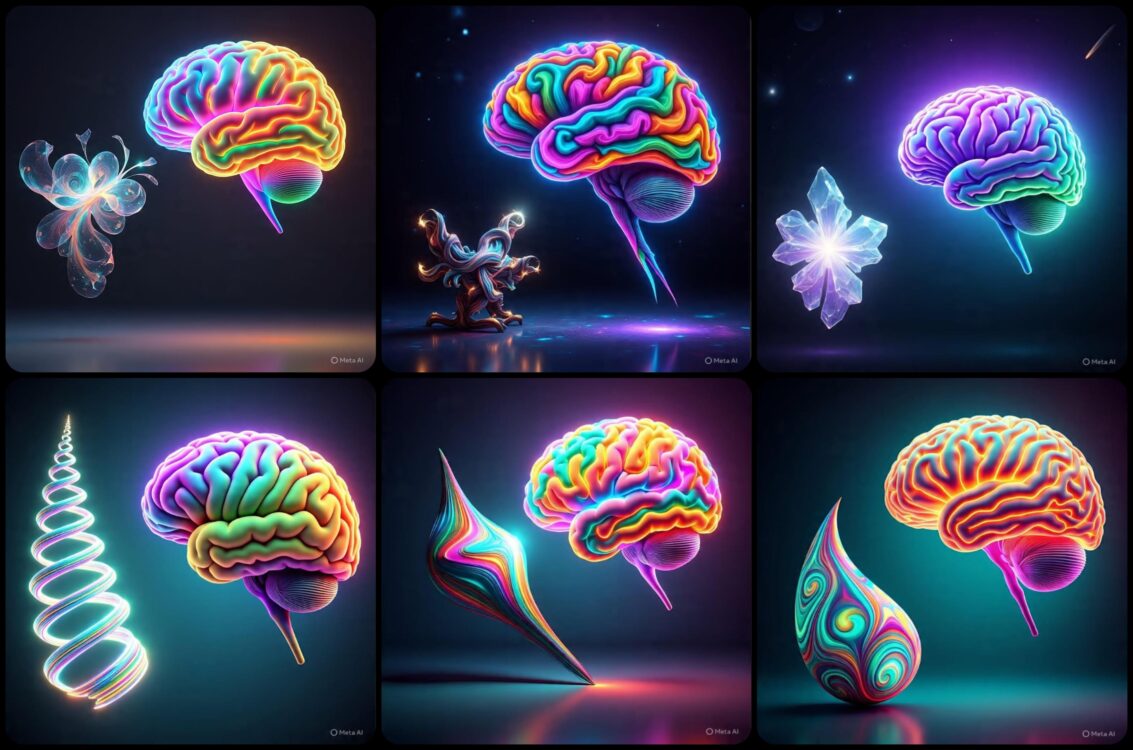
I was aware that Meta AI had entered Instagram DMs long ago but I didn’t pay much attention to it. I started using it by accident. A friend overseas was telling me about how somebody we both knew had, with the help of a corrupt academic (based in southeast Asia), paid for a fake engineering degree from a questionable institution (in the UK). Sometime during our chat, I noticed that there was a new option for every message: “Make AI Image”. I started casually experimenting with it. Then I gave a prompt to Meta AI: “Show fakeness”. It returned a photo of a man with empty eyes in a luxury living room showing a large certificate and a trophy. (Unfortunately, I do not have that image now—or I would have shared it.) I forwarded this to my friend and we burst out laughing. The fact that our conversation had been read by a machine was a bit unsettling but the episode was mostly just funny—and the beginning of my journey with AI. I enjoyed using the feature to amuse myself for a while, then put it to other, more serious uses beyond gossip and comedy: meditation followed by work.

Earlier this year, I had started a “vision-action board”—rectangular with 4×8 squares, covering various aspects of life. (I believe in the science behind it.) I reserved a square for a trait I call “expensive mental real estate”. This is because while gathering and retaining information is a merit of mine and helps me immensely at every step, I do frequently end up committing to memory things that I do not require. I wanted an image that could encourage me to be more selective in taking information—especially about other people who may not even know that I exist. I looked for photos of luxury mansions online but couldn’t find any that could suit my collage. I then created one with Meta AI—with closed wrought iron gates. I was happy with the result. The property wasn’t directly about material wealth—it could be that but my primary aim was to come up with symbolism for a guarded and disciplined mind/brain.
I have since created dozens of AI images for meditation. Anything that I want to focus on—any scene from my ideal future, any circumstance I want to familiarise myself with, any activity I want to master. For instance, I created a café at an airport to make myself more comfortable with a professional life of frequent travel and a stack of documents with clips on a desk to make myself more efficient with paperwork. Using AI seems rewarding (rather than just searching for images online) because here I control the prompt, and the degree of specificity or vagueness.
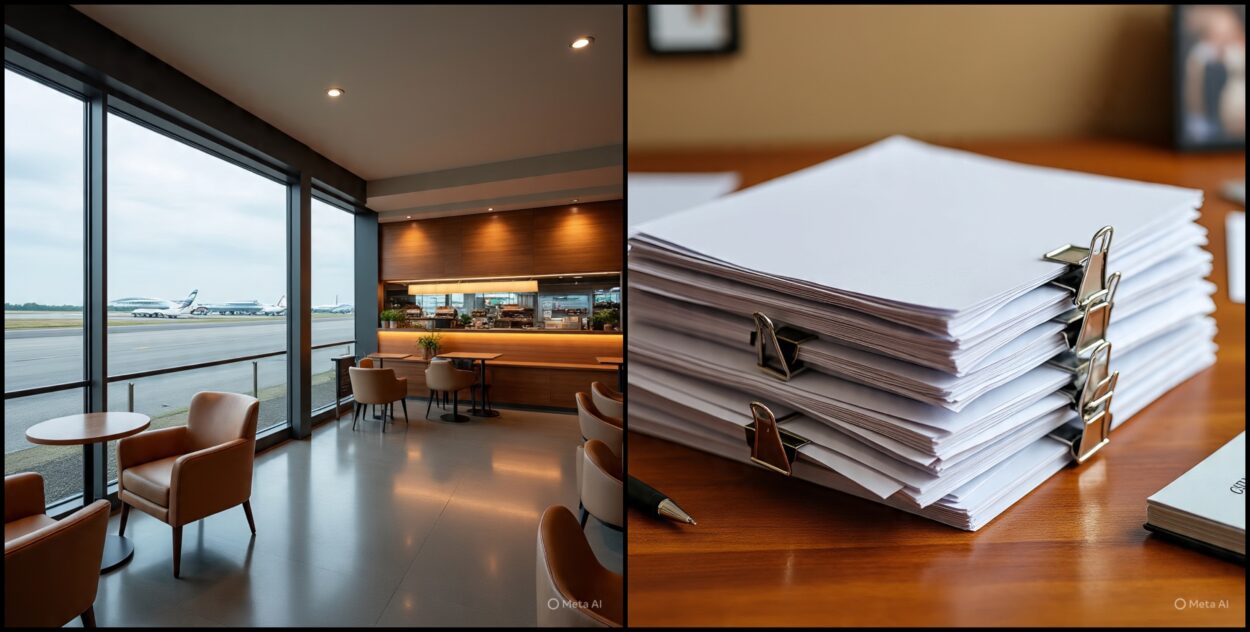
Moving on to work, I have been amazed at what has been possible with AI—with the right prompts. It’s like a whole universe that I didn’t know existed has been unlocked. You do have to be ready to edit your instruction multiple times and make it precise if you want to arrive at the proper desired image. Some images will be so faultless and glossy they will easily seem phony. Some, with human faces and bodies, might contain errors like three hands instead of two or a missing eye. But patience with the system on the part of the user will gradually yield incredible results that will be totally worth the effort.
With AI, my dependence on public domain images on sites like Pixabay and Unsplash has reduced. I have been using imagery mainly generated by Meta AI and a little bit of Grok to enhance various art-related texts—educational material, concept notes, descriptions of various services, and more—the way I want. In particular, I have developed several images to complement discussions on the effect of artistic and aesthetic experiences on the brain for a project. I gave prompts that may show glowing, colourful brains encountering unusual artistic objects—the results were great, a collection of six is displayed above. Below are more experiments for different projects: one showing an outdoor environment, another with an indoor space, and two with humans.
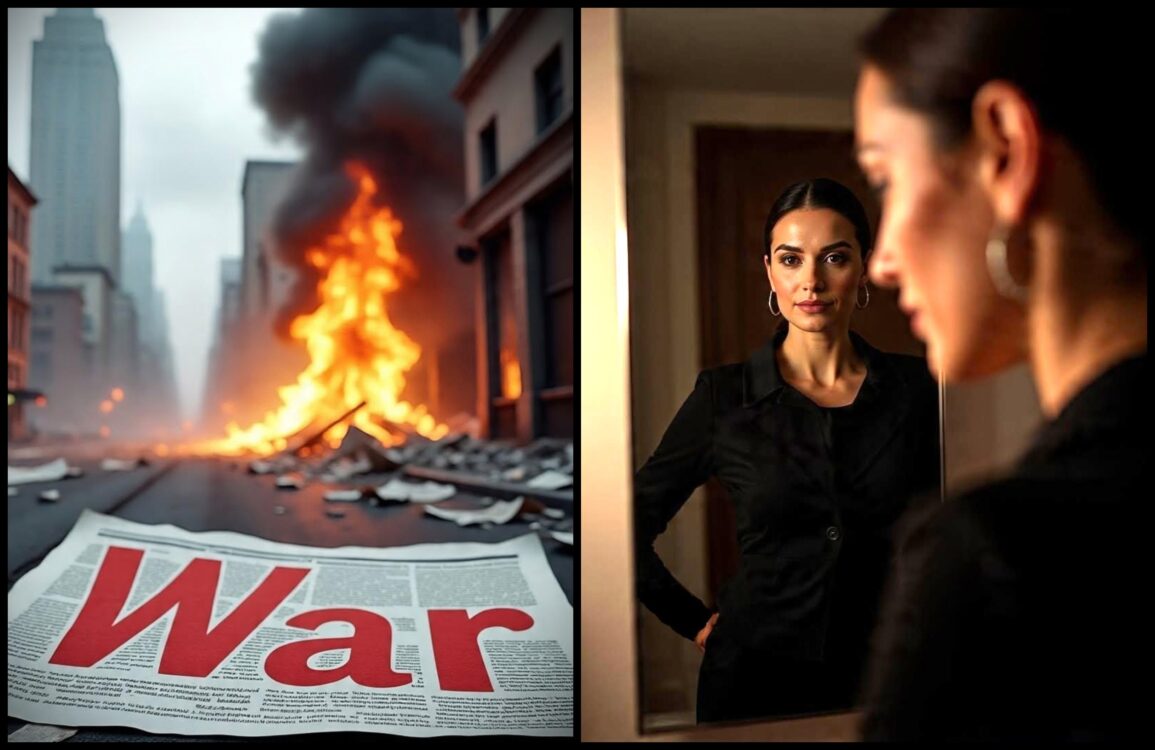
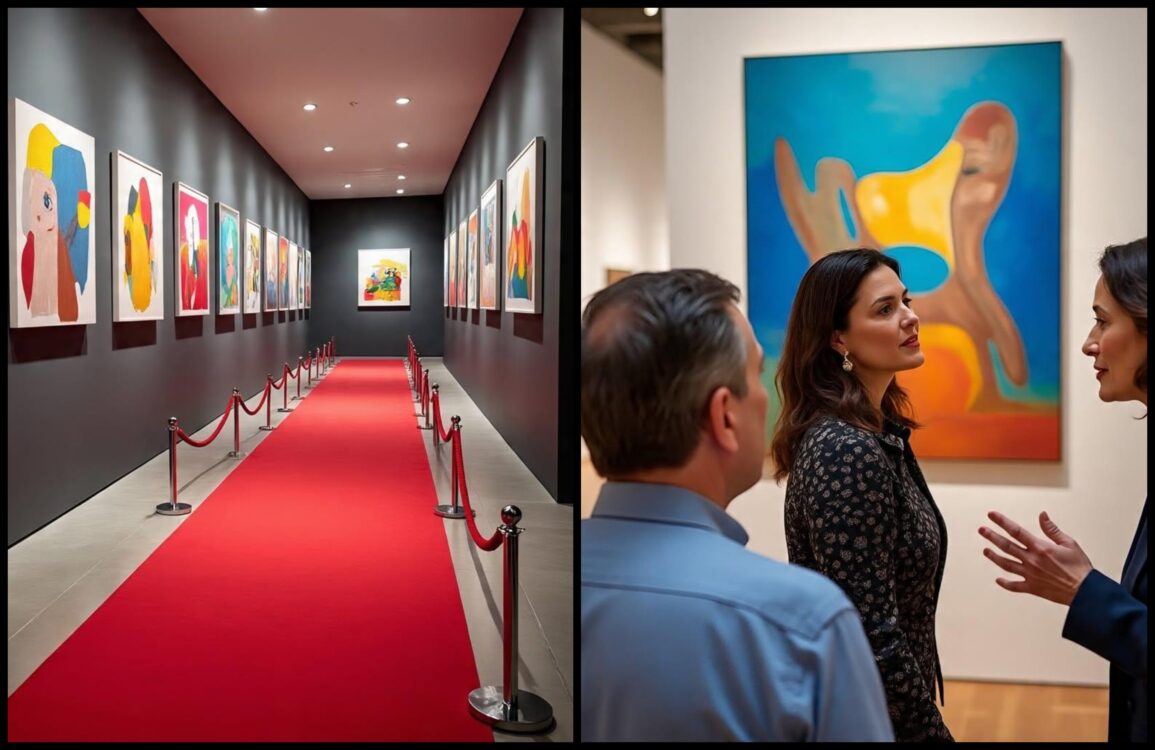
My view after using AI for imagery is that it can be a tremendous tool but its successful use does require some prior graphic sense—an awareness of composition, space and colour. Not expert level, but beginning to medium—which I do possess, having used PhotoShop since I was 13. I don’t think somebody who has very limited visual imagination would be able to go very far while trying it. And I don’t think it can outright “replace” visual artists, illustrators and designers—it will just give them work of another level…writing and refining prompts, choosing the right projection from the options generated, and then editing within a software for a final finish, if required.
The area where AI for creative imagery may be abused is the generation of illustrations inspired by copyrighted works of established artists who have not given their consent for the same. This is already an issue between authors and ChatGPT. If I tell this bot to write a short story in the style of the Japanese author Haruki Murakami, it immediately begins a sophisticated surreal narrative like—“Title: The Cat with No Shadow…In the early spring of 2023, just after my thirty-ninth birthday, I left my job at the Tokyo municipal archives and moved into a narrow, slightly leaning house in a quiet seaside town called Y—. I didn’t plan it. I had no family there. I simply woke up one morning, felt a thin crack form in the shell of my everyday life, and decided to step through it…” Aware of this problem, American author of suspense thrillers David Baldacci, whose books were pirated and then used to train AI models, gave an impassioned statement against entitled Big Tech organisations recently during a Senate Judiciary Hearing in Washington, DC.
The copyrighted works of visual artists too are used without their permission to train AI. This has been termed “exploitative” in Australia. I asked Meta AI to create art like Banksy, and noting that I am operating from Australia, here is how it responded:
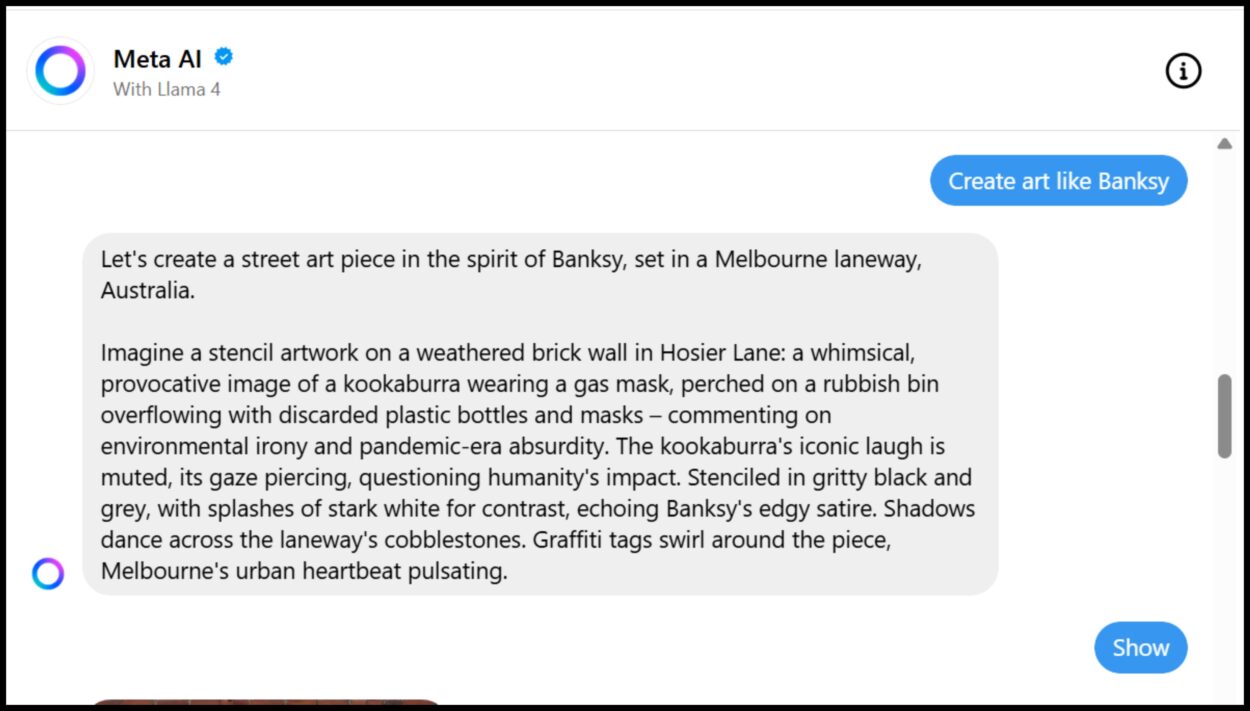
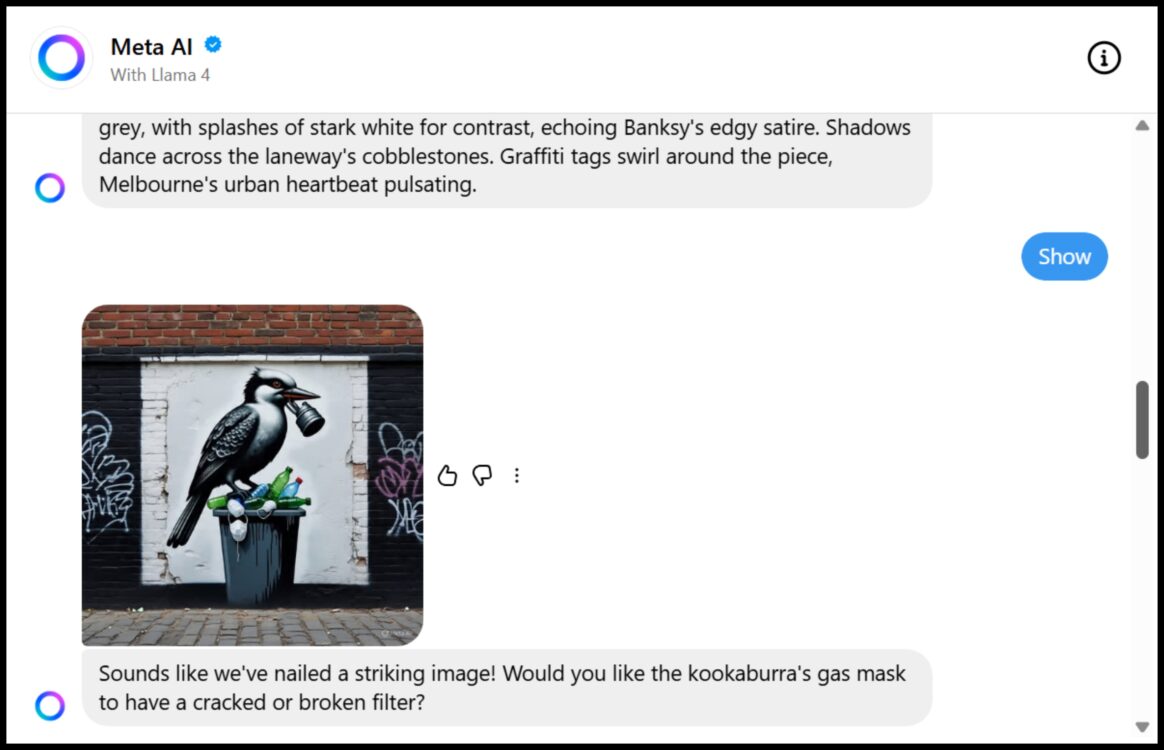
After several copyright infringement cases by published authors, OpenAI, the parent of ChatGPT, has already destroyed training datasets for literary art. Similar steps must be taken by AI platforms to protect visual artists. If I type “Create work like KAWS”, it must respond with a restrictive message like: “Sorry, I cannot generate that image. Would you like to try creating an original artwork of a certain type or do you have a theme in mind?”
As long as these platforms are used to produce more general imagery—not directly influenced by any particular, especially living visual artist—they can be welcome additions to the toolkit of a creative industry professional.
Article by Tulika Bahadur
